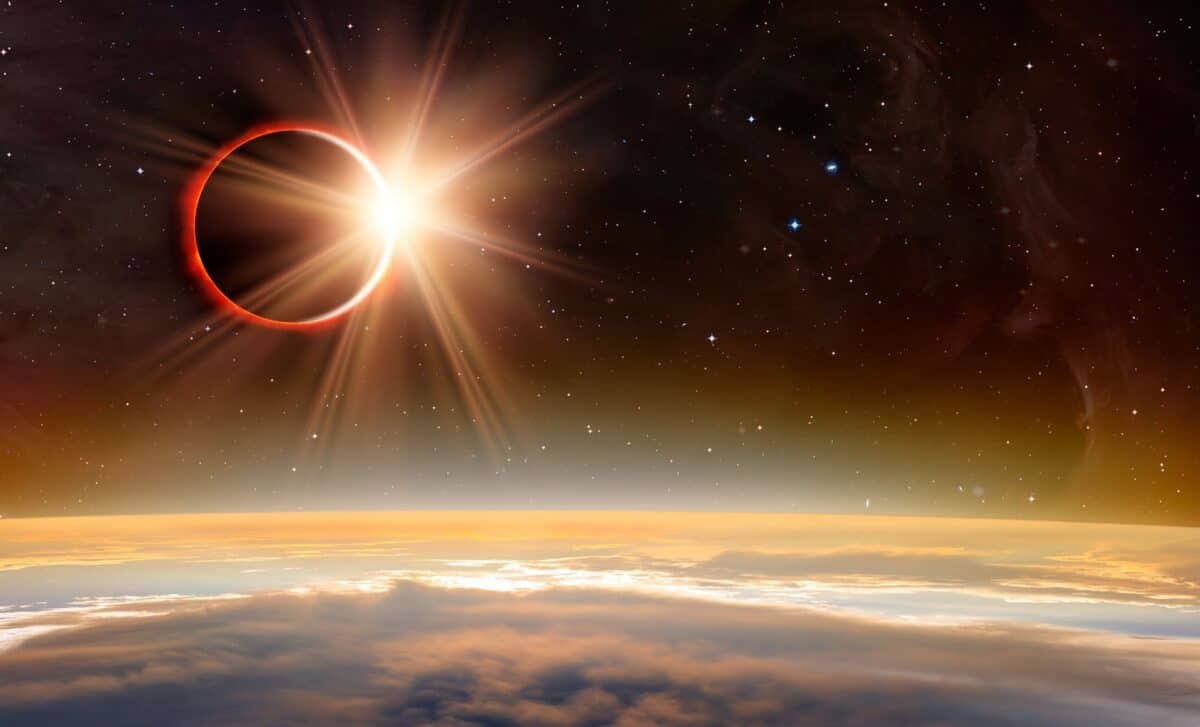On August 2, 2027, the longest total solar eclipse of the 21st century will sweep across parts of Europe, North Africa, and the Middle East. For those situated in the narrow path of totality, the event promises up to 6 minutes and 22 seconds of complete solar obscuration—an occurrence not expected again until 2114.
This rare astronomical alignment will occur as the Moon passes directly between the Earth and the Sun, fully covering the solar disc for observers within a specific geographic corridor. Although only a limited portion of the planet will witness full darkness, the spectacle is expected to draw global attention due to its extended duration and scientific value.
The path of totality—approximately 258 kilometers wide—will extend over 15,227 kilometers across Earth’s surface. Countries including Spain, Morocco, Tunisia, and Egypt lie within this band, where viewers will experience total darkness in daylight. This event will be the longest of its kind to occur on land during this century, making it an exceptional opportunity for both skywatchers and researchers.
France’s Special Forces Could Soon Ride Electric Scooters into Battle
Why This Eclipse Will Be the Longest of the Century
The unusual length of the August 2 eclipse results from a rare alignment of several astronomical factors. On this date, the Moon will be at perigee, its closest orbital point to Earth, appearing slightly larger than average in the sky.
Simultaneously, Earth will be at aphelion, its farthest point from the Sun, causing the Sun to appear marginally smaller. This dual effect allows the Moon to fully block the Sun for an extended period.
The eclipse path’s proximity to the equator is another contributing element. As reported by Space, the Moon’s shadow moves more slowly across the Earth at equatorial latitudes, increasing the duration of totality for those positioned along this route.
The Path of Totality: Where and When to See the Full Eclipse
Although described as a global event on social media, the eclipse will be fully visible only to those within the designated path of totality. Viewers outside this band will experience only a partial eclipse, with varying degrees of solar obscuration depending on their location.
The same source explains that the most extensive period of total darkness—over six minutes—will occur in certain areas along this path, including parts of Northern Africa and Southern Europe.
The rest of the world will continue in daylight, unaffected by the eclipse’s full visual impact. As clarified in the article, the phenomenon will not plunge the entire planet into darkness, contrary to some misleading online claims.
A Rare Opportunity for Scientific Discovery
Beyond its visual appeal, this eclipse holds substantial value for solar research. The extended duration of totality will allow scientists to observe the solar corona—the outermost layer of the Sun’s atmosphere—with greater precision. This period offers a unique window to track solar flares, monitor coronal mass ejections, and examine other phenomena that are typically hard to capture.
The data collected during the eclipse will also support future space missions such as NASA’s Parker Solar Probe and ESA’s Solar Orbiter, enabling better calibration of onboard instruments. These studies aim to deepen understanding of the Sun’s activity and its effects on Earth’s space weather systems, including impacts on satellite communications and power infrastructure.








